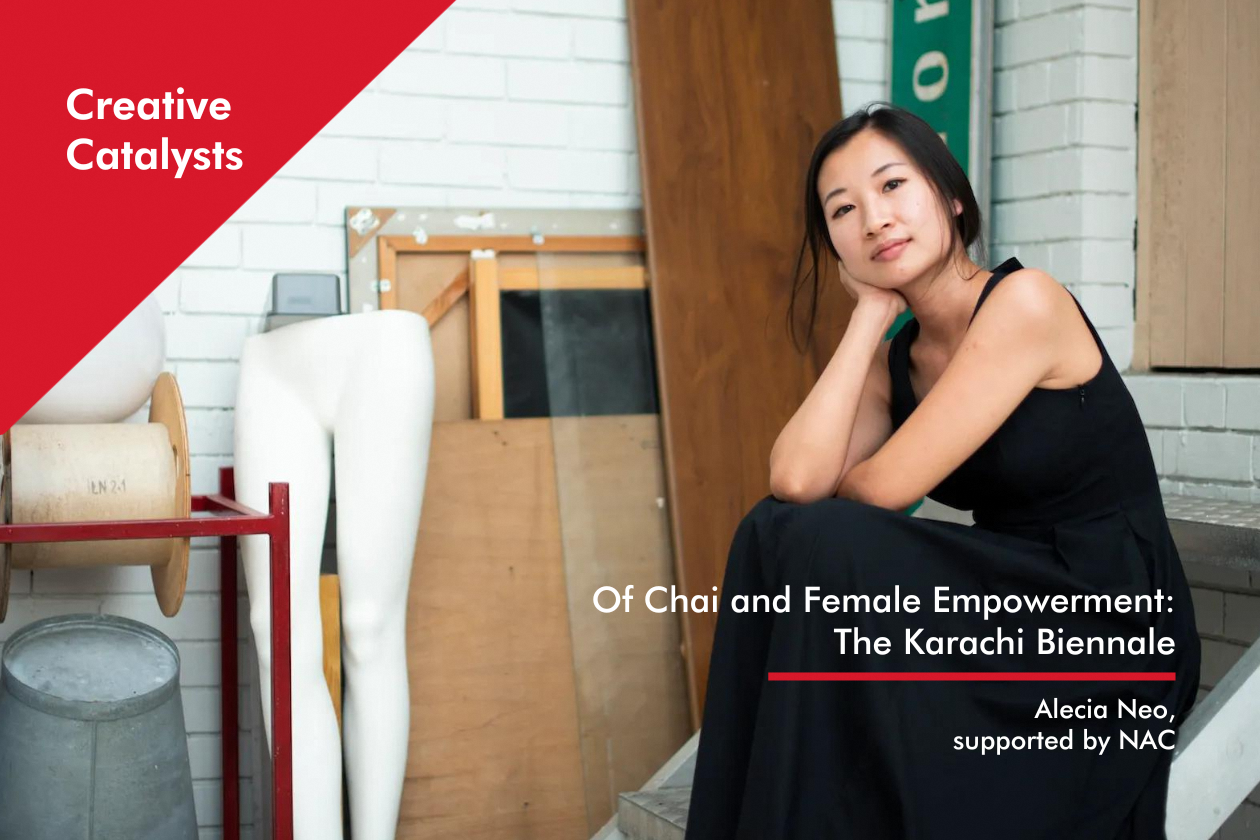
Introduction
Alecia Neo's collaborative practice unfolds primarily through installations, lens-based media and participatory workshops that examine modes of radical hospitality and care.
Passionate about collaborative partnerships and engaging with the community, Alecia has co-founded Brack, an art collective and platform for socially engaged art, and Unseen Art Initiatives, a Singapore-based art platform for professional and emerging disabled artists.
The National Arts Council (NAC) recognises the passion and artistic excellence that contributes to the thriving creative economy we have in Singapore—this includes providing artists and organisations with the opportunity to make their mark globally. At the Karachi Bienniale 2022, Alecia showcased Power to the People at Hamid Mansion, a combination of wires, light bulbs, sound and light score with double-sided mirrors. The video projections of moving hands gesture towards the potential of collective care, imagination and play.
She tells us more about the project, which was initially staged in Singapore at the Pasir Panjang Power Station in 2019 and 2020 as a live performance in collaboration with artists Chong Li-chuan and ArunDitha Emmanuel, and how it has inspired her as an artist.
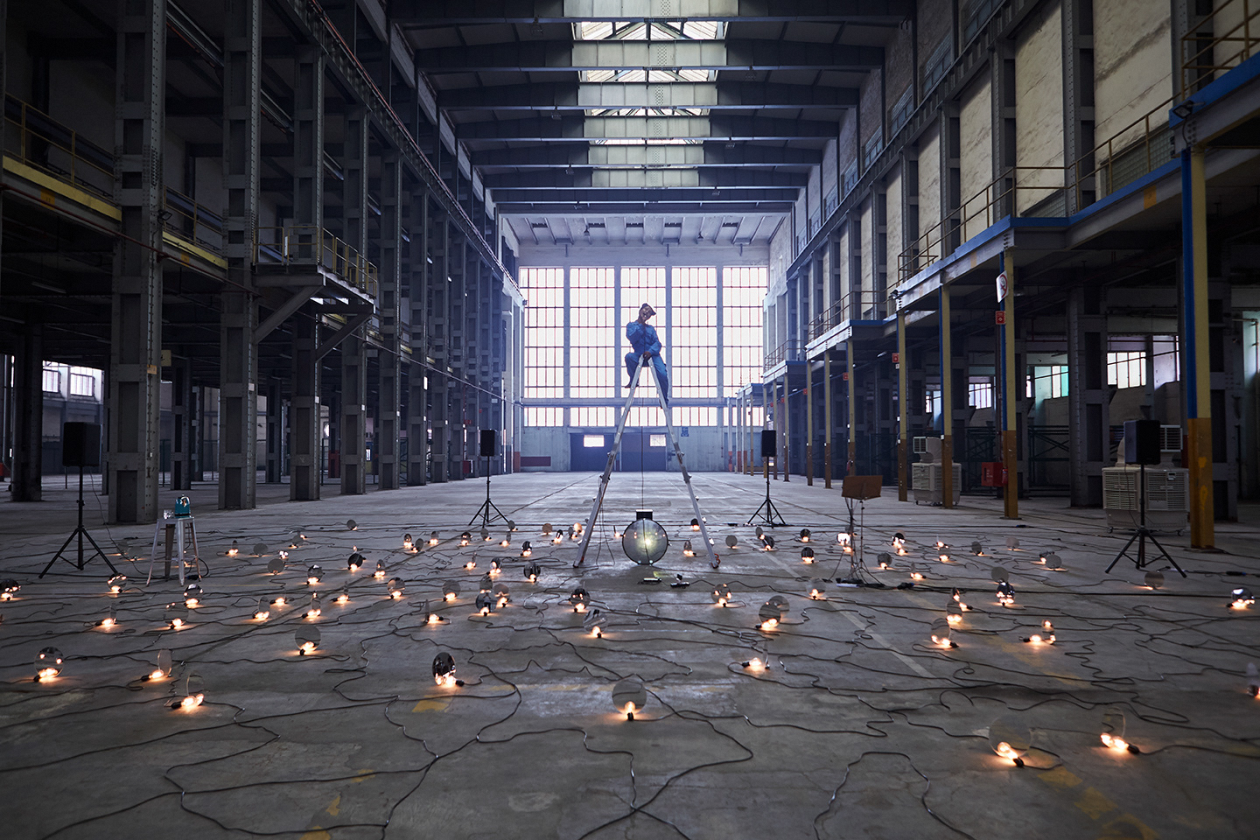
‘Power to the People’ (2019 & 2020), staged at the Pasir Panjang Power Station. Image Credit: Alecia Neo
Q&A
1. Tell us more about this project.
The 15-minute sound composition by my collaborator Chong Li-chuan interacts with the pulsation of light bulbs and a series of hand gestures in the installation. In the mid-section of the piece, the drone creates an electrical hum, which imparts a sense of unity, a sense of the city being powered by a collective energy.
At the peak of the sound composition, there is a point where all the light bulbs glow at their brightest. The brightness renders the projection of the moving gestures of hands on the mirrors barely visible. This is when the attention is brought back to the viewers themselves... they begin to see themselves in the reflection.
It is heartening to learn that Ms Yasmeen Lari, a renowned architect in Pakistan and Co-Founder of Heritage Foundation Pakistan, and her team are working to complete the conservation work of Denso Hall, open the building to the public and establish the site as a heritage site. The key goal of hosting the installation here was to restore the hall’s former purpose and relationship with the city’s general public as an inclusive common space for learning for all.
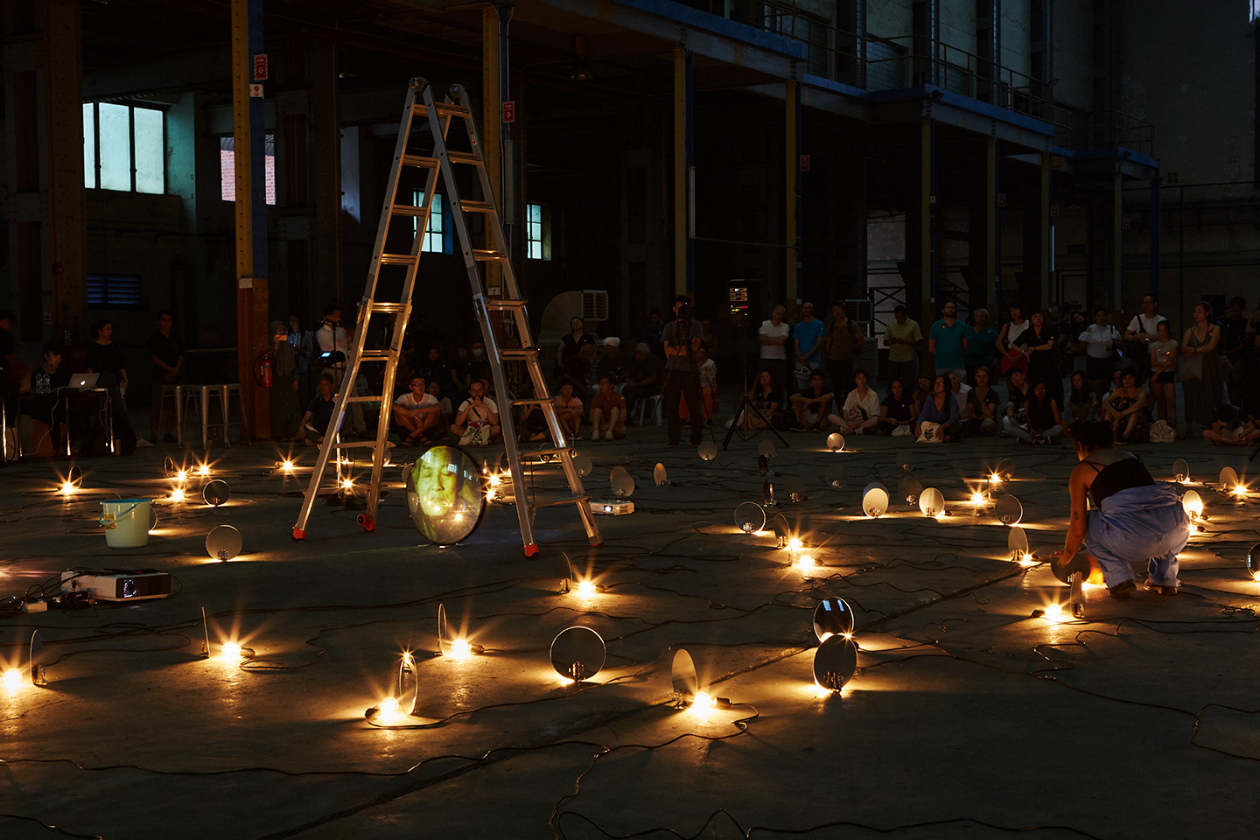
‘Power to the People’ (2019 & 2020), staged at the Pasir Panjang Power Station. Image Credit: Alecia Neo
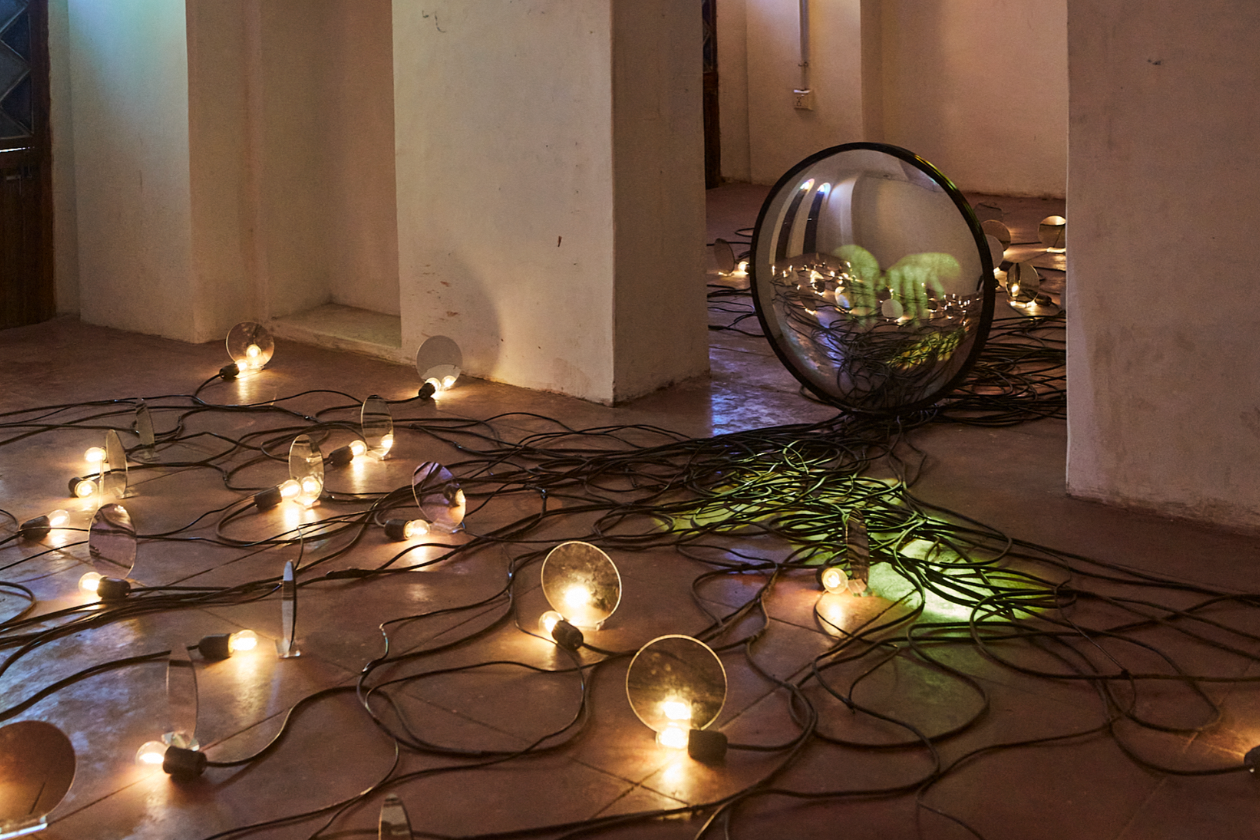
‘Power to the People’, staged at the Karachi Biennial 2022. Image Credit: Karachi Bienniale
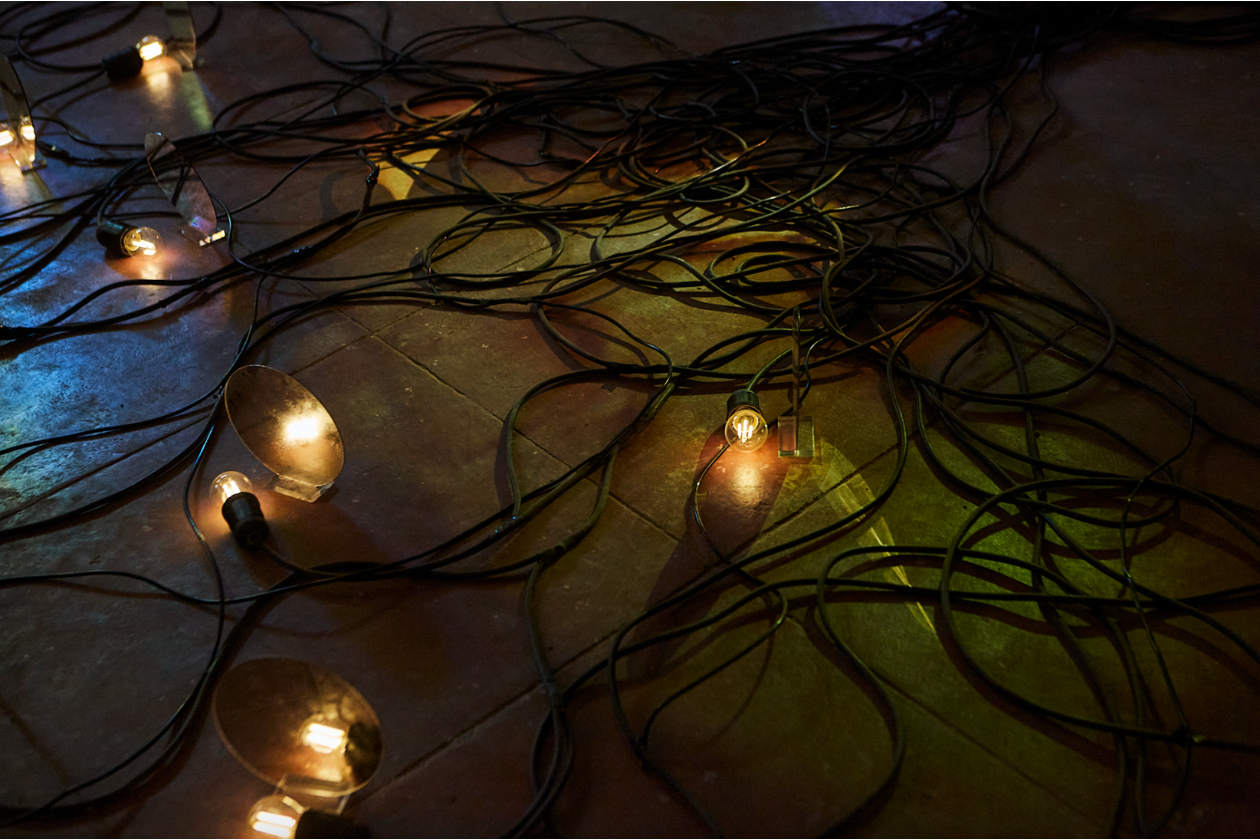
‘Power to the People’, staged at the Karachi Biennial 2022. Image Credit: Karachi Biennale
2. What was an inspiring thought-starter you experienced at the Karachi Bienniale 2022?
One of the most meaningful conversations I had during the Bienniale was with one of our gallery sitters, Subhan, an architecture graduate, who asked me about the symbolism in the work. And we ended up talking about what public spaces should ideally be like in Karachi. He shared the beautiful project he had dreamed up in architecture school about creating and transforming public libraries into civic spaces.
3. With the restaging in Karachi, Pakistan, who would you say the work is created ‘for’?
Sited in the Hamid Market, the work is a tribute to the people of Pakistan, particularly the working class, and the positionality of the anonymous worker, whose labour builds and sustains a city, but whose work is often unacknowledged.
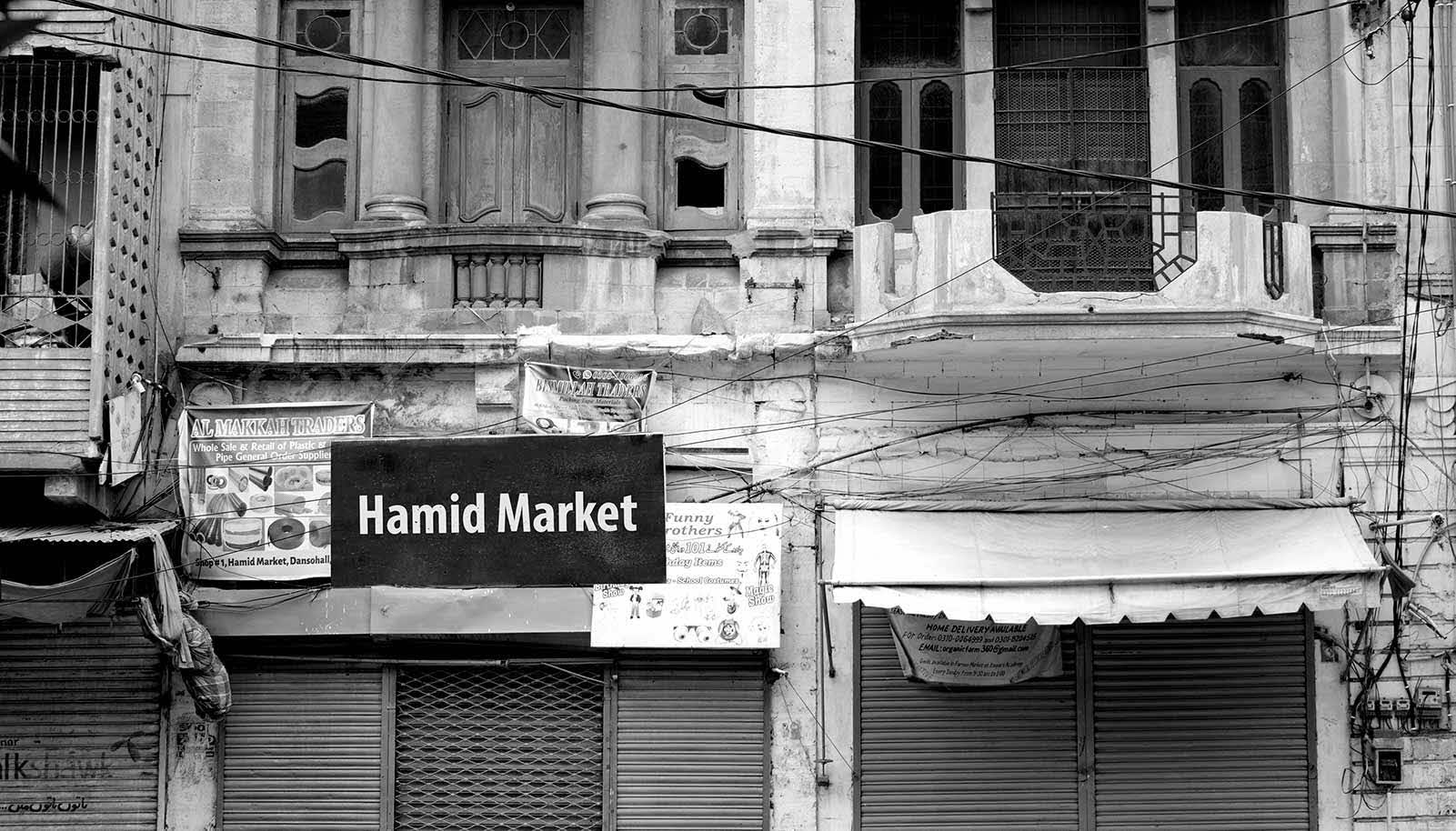
An image of Hamid Market, where Alecia’s work was set up for the Karachi Biennale. Image Credit: Karachi Biennale
4. What were some tangible advancements you were able to make with NAC’s support?
The grant supported our team of collaborators Chong Li-Chuan and ART FACTORY, manifesting a new way of presenting the work as a site-specific art installation instead of a live performance. We were able to program the lights, sound and videos to work remotely. The opportunity to present the work at the Karachi Bienniale also introduced and connected our practice to new audiences in the South Asian region and international artists.
5. What is one unforgettable memory you have while working on this project?
Drinking chai along the steps of Denso Hall, watching the hustle and bustle of Hamid Market, with my new-found friends from Karachi, who assisted me with setting up the work.
________________________________________
Learn about the Council’s efforts to support the growth of the arts scene at: https://www.nac.gov.sg/support/funding-and-schemes


